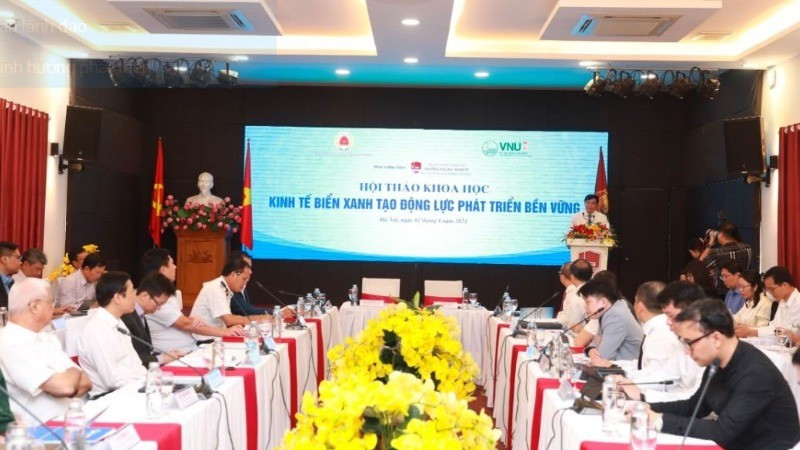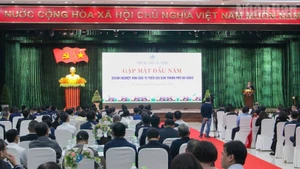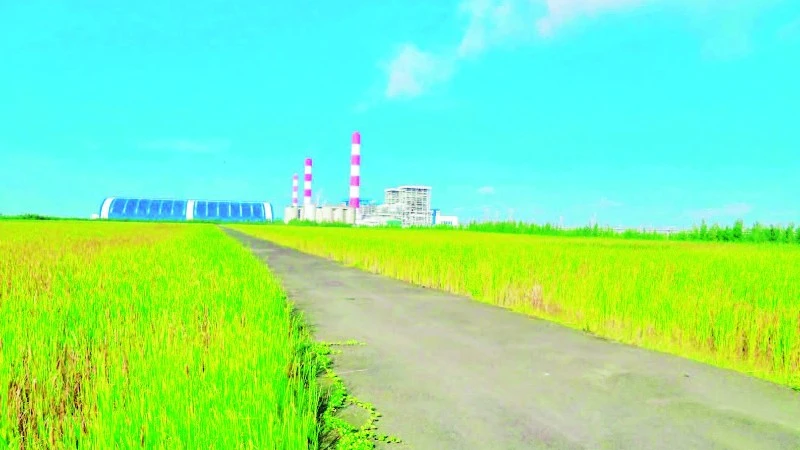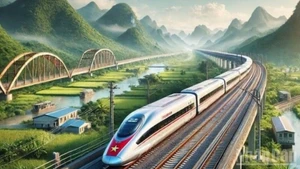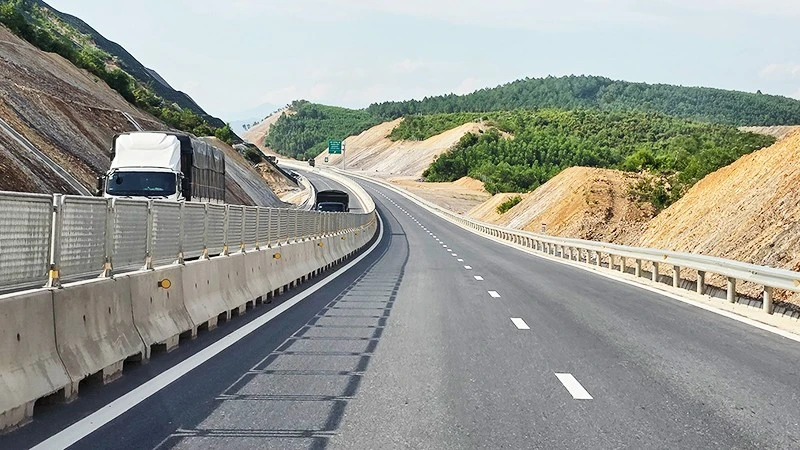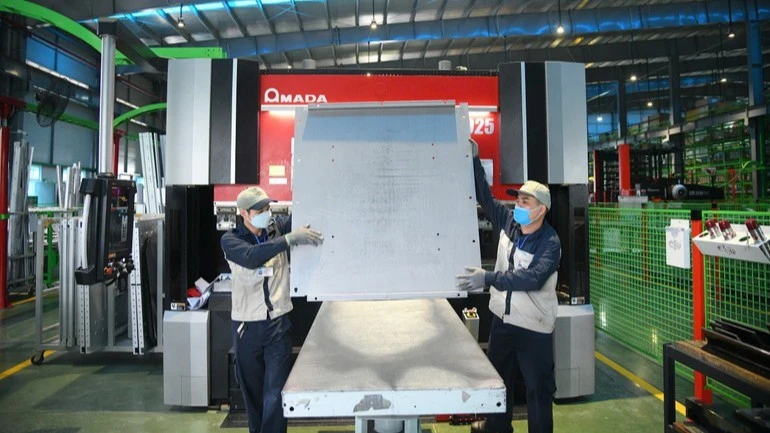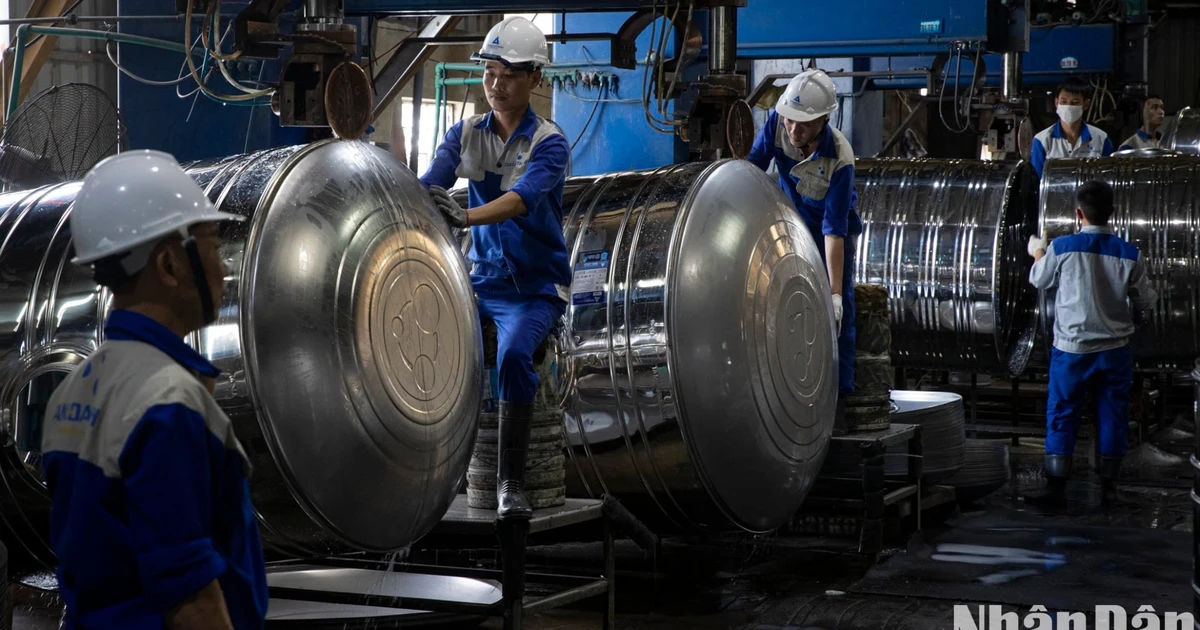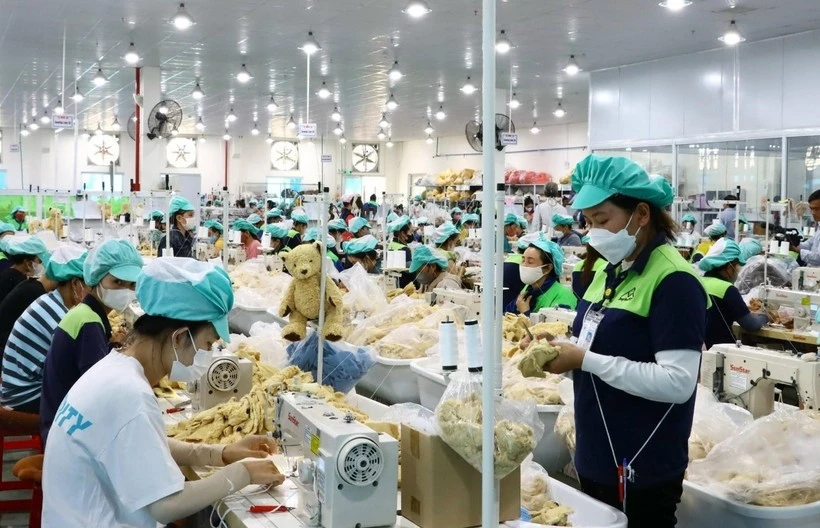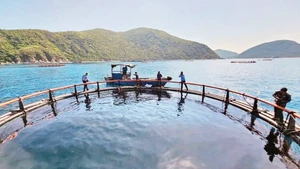In addition to its rich marine economic potential—including oil and gas, fisheries and tourism—Viet Nam’s maritime domain plays a vital role in national defence. The country’s islands and archipelagos function as “strategic outposts”, forming an integrated defensive network alongside the mainland to safeguard national sovereignty from the sea.
A key driver in marine economic exploitation
As Viet Nam advances its socialist-oriented market economy, the private sector has increasingly asserted itself as one of the key drivers of growth, job creation and enhanced national competitiveness. In particular, within the marine economy—a strategic pillar of the national economy—the private sector is gradually demonstrating robust momentum, emerging as a pioneering force in tapping into the country’s maritime and island potential.
From being a “supplementary” economic component, the private sector has grown into a critical pillar alongside the state-owned sector and foreign-invested enterprises. Currently, the private sector has more than 940,000 enterprises and over 5 million business households, contributing approximately 50% of GDP, over 30% of total state budget revenues, and employing around 82% of the national workforce. It is a vital force in driving innovation, boosting productivity, enhancing competitiveness, and contributing to poverty reduction, job creation, and social stability.
In the marine economic sector, the private sector has demonstrated its prominent role through impressive figures: accounting for 65% of fishing output and 80% of aquaculture output; owning 70% of coastal accommodation and tourism service establishments; participating in 45% of seaport logistics activities and especially pioneering in renewable energy projects, such as offshore wind power - a field that is opening up new development space for Vietnam's marine economy...
President Ho Chi Minh once underscored: “In the past, we had only night and forest. Today, we have day, sky, and sea. Our coastline is long and beautiful; we must know how to protect it.” His words are not only a strategic orientation but also a rallying call to action for future generations.
The the 10th Party Central Committee’s Resolution No. 09-NQ/TW dated February 9, 2007 on Viet Nam’s marine strategy to 2020 explicitly stated: “Vigorous development of all economic sectors, encouraging private, collective, and foreign-invested sectors to participate in marine economic development.” This provided an open policy direction, creating a legal and ideological framework for private sector to invest in the marine domain.
The 13th National Party Congress’s Resolution affirmed: “Strongly developing the private sector truly becomes an important driving force of the economy.” The goal of making Viet Nam a strong and prosperous maritime nation was emphasised, with marine economic growth and private enterprises identified as indispensable components.
Most recently, on May 4, 2025, the Politburo issued Resolution No. 68-NQ/TW on developing the private economy, aiming to realise the goals set forth in the Resolution of the 13th National Party Congress and meet the demands of development in the new era.
The shift in thinking, coupled with a unified approach in perception and action, necessitates comprehensive, breakthrough solutions to maximise the private sector’s role, reinforce confidence, and generate new momentum for economic growth and competitiveness enhancement. This requires recognising the private sector as a primary driver of the national economy—a pioneering force in job creation, productivity enhancement, and innovation.
Nevertheless, the private sector still faces numerous barriers that hinder its breakthrough in scale and competitiveness, falling short of its expected role as a core economic pillar. In the marine sector specifically, several challenges remain unresolved.
One notable reality is that 85% of private enterprises operating in the marine sector are small or micro-sized, limiting their financial capacity and ability to pursue long-term investments. Only around 15% of these firms adopt high-tech solutions, highlighting slow progress in technological innovation. Access to long-term capital remains a major bottleneck, especially for large-scale marine infrastructure projects. Furthermore, a shortage of skilled technical personnel and overlapping legal frameworks concerning marine resource exploitation continue to undermine the sector’s operational efficiency and competitiveness.
In practice, numerous successful private sector models have emerged in the marine economy. Well-known enterprises with closed value chains—from aquaculture to export—or those investing in modern ports and shipbuilding, exemplify this success. Common among them are long-term strategic visions, methodical investment, technological adoption, and proactive international integration. These factors have enhanced their competitiveness while making vital contributions to the sustainable development of Viet Nam’s marine economy.
Strategic direction and regulatory development
Throughout national development, the Party and State have established legal frameworks, policies, and governance mechanisms to ensure the marine economy develops along the right trajectory. The legal framework has been increasingly consolidated through laws such as: the Law of the Sea of Viet Nam (2012), the Fisheries Law (2017, amended 2023), the Law on Marine and Island Resources and Environment (2015), and Resolution No. 36-NQ/TW (October 22, 2018) on Viet Nam’s sustainable marine economic development strategy to 2030, with a vision to 2045. These serve as comprehensive and modern foundations for the governance, exploitation, and protection of marine and island resources.
Marine governance mechanisms have also become multi-level and multi-sectoral. Central authorities and coastal localities collaborate on both integrated and sectoral management, gradually improving policy implementation effectiveness. The State has introduced support policies to boost the marine economy, such as corporate income tax incentives, exemptions on high-tech equipment imports, subsidised interest rates, and the establishment of marine science and technology funds—creating favourable conditions for investment in key areas such as fisheries, renewable energy, and marine tourism.
The Party’s stance is clear: “Strongly develop the marine economy to match the nation’s maritime potential and position, linking marine economic development with defence, security, and sovereignty protection. Accelerating urbanisation to form major marine economic centres, promoting seaward expansion while diversifying high-value service sectors such as import-export, tourism, fisheries services, oil and gas, and transport. Developing island economies must match with each island’s specific potential and advantages.”
Sustainable marine economic development
Viet Nam’s marine economy sees tremendous opportunities for growth, yet also face systemic challenges that demand strategic, integrated and sustainable solutions in governance, investment and management.
Overexploitation has led to a 30–40% decline in nearshore fish stocks over the past decade. Marine pollution is increasingly severe, with 70% of plastic waste originating from land. Climate change and rising sea levels threaten approximately 30% of coastal land, particularly in low-lying deltas. Meanwhile, The institutional system for marine management is fragmented and unconnected. Overlapping between ministries and sectors makes the assignment of responsibilities unclear and coordination effectiveness reduced. The marine database is not synchronized and lacks information sharing, reducing the effectiveness of planning and implementing marine policies.
In response, Viet Nam must adopt strategic solutions. First, it should accelerate legal reform—reviewing and amending the Law on Marine and Island Resources and Environment, and early promulgation of the Law on Marine Economy and establishment of the National Committee on Marine Economy. These will be breakthrough in terms of law and coordination; building and implementing a set of policy criteria for national development that is strong in the sea and rich from the sea.
At the same time, administrative reforms must be deepened—cutting at least 30% of procedures for businesses investing in the marine sector—and large-scale preferential credit packages should be introduced to support technological innovation.
Science and technology must become the backbone of marine economic development. Priority should be given to applying Industry 4.0 solutions in fisheries surveillance, pollution monitoring, and adopting advanced mariculture technologies from countries like Norway and Israel. Establishing marine workforce training centres in port cities such as Hai Phong, Da Nang, and Vung Tau will also provide a strong human resource foundation for long-term development.
On the environmental front, Viet Nam must accelerate implementation of the National Marine Spatial Plan, dedicating at least 30% of marine space to ecosystem conservation. Circular economy models should be realised through the development of zero-emission eco-industrial parks, alongside a dedicated ocean plastic waste collection programme to combat marine pollution.
Furthermore, multilateral cooperation mechanisms are crucial. Viet Nam should expand public-private partnership models in seaport and eco-tourism infrastructure, strengthen regional linkages along north-central-south axes to develop distinctive marine economic value chains, and actively participate in regional initiatives.
With a coordinated, multi-dimensional approach anchored in a solid political and institutional foundation, Viet Nam is well-positioned to transform current challenges into development drivers—elevating the marine economy into a pillar of sustainable growth, while securing livelihoods, protecting the environment, and safeguarding the nation’s sacred maritime sovereignty.
The private sector plays a pivotal role in unlocking marine economic potential. However, its long-term success depends on strategic guidance from Viet Nam’s political institutions. With coherent policies, proactive business innovation, and effective marine conservation, the marine economy could truly become a spearhead sector—bolstering Viet Nam’s stature in the global economic and geopolitical arena.
